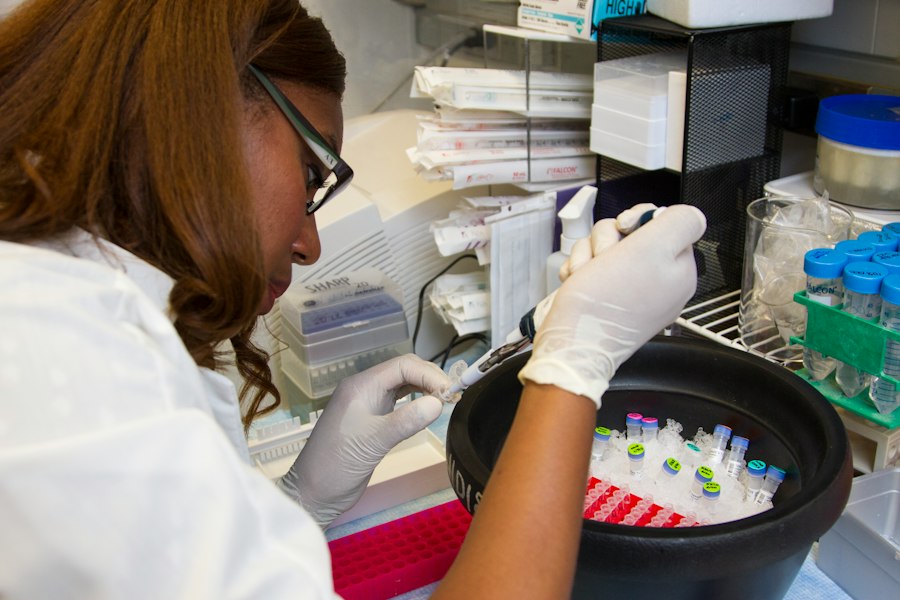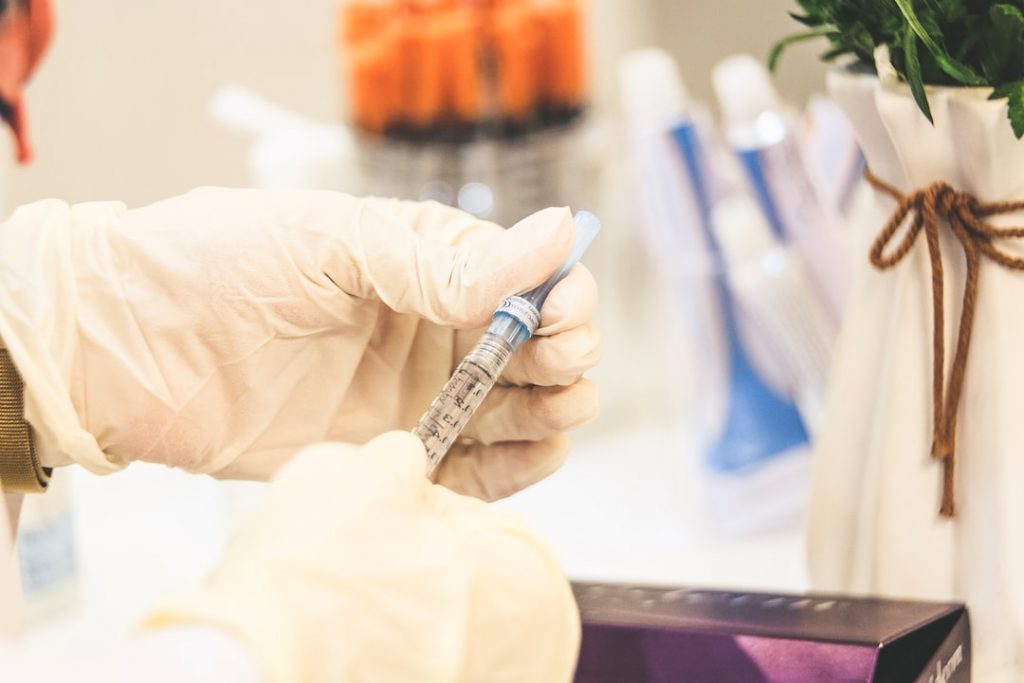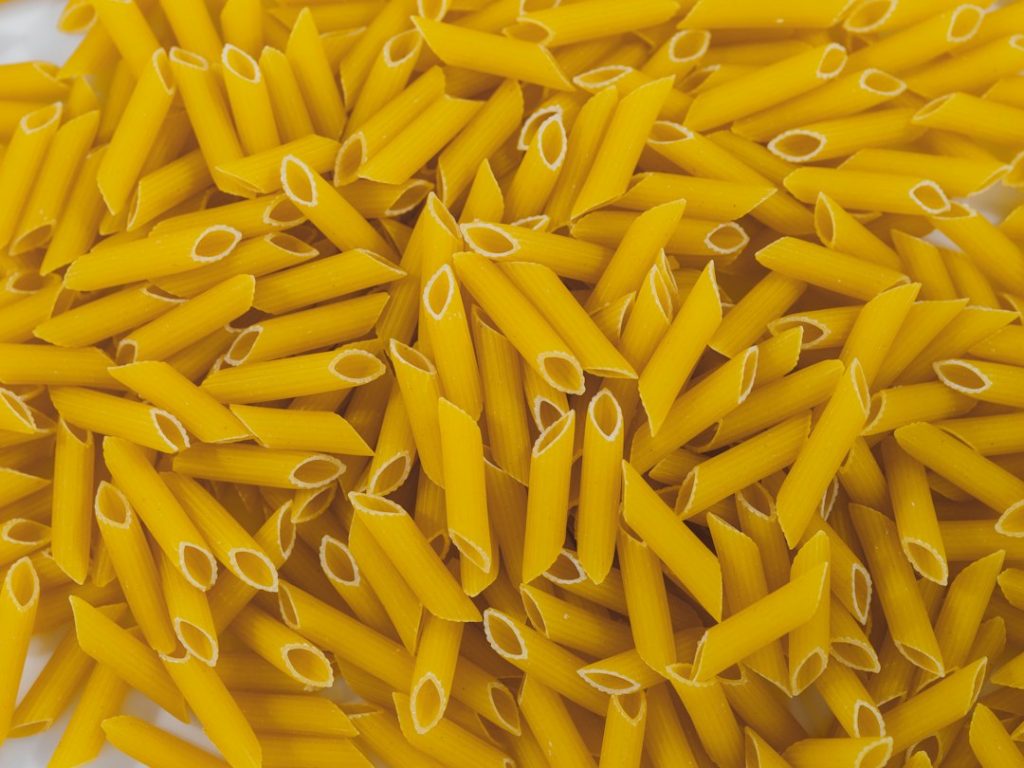DNA replication and RNA transcription are fundamental processes in molecular biology that are essential for the transmission of genetic information. DNA replication is the process by which a cell duplicates its DNA, while RNA transcription is the process by which genetic information in DNA is transcribed into RNA molecules. These processes are crucial for the growth, development, and functioning of all living organisms.
Summary
- DNA replication is the process of copying DNA, while RNA transcription is the process of making RNA from DNA.
- Enzymes such as DNA polymerase and RNA polymerase play crucial roles in DNA replication and RNA transcription.
- DNA proofreading and repair mechanisms are important for maintaining the integrity of genetic information.
- Prokaryotic and eukaryotic DNA replication differ in terms of the number of origins of replication and the complexity of the process.
- DNA replication initiation involves the binding of proteins to the origin of replication, while elongation involves the addition of nucleotides to the growing DNA strand.
- Telomeres are protective caps at the ends of chromosomes that shorten with each round of DNA replication, contributing to aging.
- RNA transcription involves the synthesis of RNA from a DNA template, followed by processing steps such as splicing and capping.
- RNA polymerase is the enzyme responsible for catalyzing RNA synthesis during transcription.
- Transcription in prokaryotes and eukaryotes differ in terms of the presence of introns and the involvement of transcription factors.
- Research in DNA replication and RNA transcription in the UK is focused on understanding the molecular mechanisms involved and developing new therapies for genetic diseases.
The Basics of DNA Replication and RNA Transcription
DNA replication is the process by which a cell makes an identical copy of its DNA. It occurs during the S phase of the cell cycle and is essential for cell division and growth. The process begins with the unwinding of the DNA double helix by an enzyme called DNA helicase. This creates a replication fork, where two strands of DNA separate and serve as templates for the synthesis of new DNA strands.
RNA transcription, on the other hand, is the process by which genetic information in DNA is transcribed into RNA molecules. It occurs in the nucleus of eukaryotic cells and in the cytoplasm of prokaryotic cells. The process begins with the binding of an enzyme called RNA polymerase to a specific region of DNA called the promoter. The RNA polymerase then synthesizes a complementary RNA strand using one of the DNA strands as a template.
The Role of Enzymes in DNA Replication and RNA Transcription
Enzymes play a crucial role in both DNA replication and RNA transcription. In DNA replication, the main enzyme involved is DNA polymerase, which catalyzes the synthesis of new DNA strands by adding nucleotides to the growing chain. There are several types of DNA polymerase, each with specific functions during different stages of replication.
In RNA transcription, the main enzyme involved is RNA polymerase, which catalyzes the synthesis of RNA molecules using a DNA template. There are three types of RNA polymerase in eukaryotic cells, each responsible for transcribing different types of RNA molecules. RNA polymerase I transcribes ribosomal RNA (rRNA), RNA polymerase II transcribes messenger RNA (mRNA), and RNA polymerase III transcribes transfer RNA (tRNA) and other small RNA molecules.
The Importance of DNA Proofreading and Repair Mechanisms
| Aspect | Metric |
|---|---|
| Frequency of DNA damage | 10,000 DNA lesions per cell per day |
| Types of DNA damage | Single-strand breaks, double-strand breaks, base damage, cross-linking |
| Consequences of DNA damage | Mutations, chromosomal aberrations, cell death, cancer |
| Proofreading mechanisms | Base excision repair, nucleotide excision repair, mismatch repair |
| Repair mechanisms | Homologous recombination, non-homologous end joining, translesion synthesis |
| Importance of DNA proofreading and repair | Prevention of mutations and cancer, maintenance of genomic stability, preservation of genetic information |
DNA is constantly subjected to damage from various sources, such as radiation, chemicals, and errors during replication. If left unrepaired, DNA damage can lead to mutations, which can have serious consequences for an organism. Therefore, cells have evolved mechanisms to proofread and repair damaged DNA.
Proofreading occurs during DNA replication when DNA polymerase checks for errors in the newly synthesized DNA strand. If an error is detected, the polymerase removes the incorrect nucleotide and replaces it with the correct one. This proofreading process helps to maintain the integrity of the genetic code.
In addition to proofreading, cells also have repair mechanisms that can fix damaged DNA. There are several types of DNA repair mechanisms, including base excision repair, nucleotide excision repair, and mismatch repair. These mechanisms can correct different types of DNA damage, such as single-strand breaks, UV-induced pyrimidine dimers, and mismatches in the DNA sequence.
The Differences between Prokaryotic and Eukaryotic DNA Replication
Prokaryotes and eukaryotes have different structures of DNA and therefore different mechanisms of DNA replication. Prokaryotic DNA is circular and exists in a single chromosome, while eukaryotic DNA is linear and exists in multiple chromosomes.
In prokaryotes, DNA replication starts at a specific site called the origin of replication. The replication process proceeds bidirectionally from the origin, resulting in two replication forks that move in opposite directions along the circular DNA molecule. In contrast, eukaryotic DNA replication occurs at multiple origins of replication, resulting in multiple replication forks that move bidirectionally along the linear DNA molecule.
Another difference between prokaryotic and eukaryotic DNA replication is the presence of telomeres in eukaryotes. Telomeres are repetitive DNA sequences at the ends of chromosomes that protect them from degradation and fusion with other chromosomes. During DNA replication, telomeres are not fully replicated, leading to gradual shortening of the chromosome ends. This shortening is associated with aging and cellular senescence.
The Process of DNA Replication Initiation and Elongation

DNA replication initiation is a complex process that involves the assembly of several proteins at the origin of replication. These proteins form a pre-replication complex that unwinds the DNA double helix and recruits DNA polymerase to initiate replication. Once replication is initiated, DNA polymerase synthesizes new DNA strands by adding nucleotides to the growing chain.
DNA replication elongation occurs at the replication fork, where two strands of DNA separate and serve as templates for the synthesis of new DNA strands. The leading strand is synthesized continuously in the 5′ to 3′ direction, while the lagging strand is synthesized discontinuously in small fragments called Okazaki fragments. These fragments are later joined together by an enzyme called DNA ligase.
The Significance of Telomeres in DNA Replication and Aging
Telomeres play a crucial role in DNA replication and aging. As mentioned earlier, telomeres are repetitive DNA sequences at the ends of chromosomes that protect them from degradation and fusion with other chromosomes. However, during DNA replication, telomeres are not fully replicated due to the inability of DNA polymerase to replicate the very ends of chromosomes.
This incomplete replication leads to gradual shortening of telomeres with each cell division. Eventually, when telomeres become critically short, cells enter a state called replicative senescence, where they can no longer divide. This process is believed to contribute to aging and age-related diseases.
The Mechanisms of RNA Transcription and Processing
RNA transcription is a complex process that involves several steps, including initiation, elongation, and termination. The process begins with the binding of RNA polymerase to a specific region of DNA called the promoter. The RNA polymerase then unwinds the DNA double helix and synthesizes a complementary RNA strand using one of the DNA strands as a template.
After transcription, the newly synthesized RNA molecule undergoes several processing steps before it can be used to produce proteins. In eukaryotes, these processing steps include capping, splicing, and polyadenylation. Capping involves the addition of a modified nucleotide to the 5′ end of the RNA molecule, while polyadenylation involves the addition of a string of adenine nucleotides to the 3′ end. Splicing is the removal of introns, non-coding regions of the RNA molecule, and joining together of exons, coding regions of the RNA molecule.
The Role of RNA Polymerase in Transcription
RNA polymerase is the enzyme responsible for catalyzing the synthesis of RNA molecules during transcription. There are three types of RNA polymerase in eukaryotic cells, each with specific functions. RNA polymerase I transcribes ribosomal RNA (rRNA), which is a component of ribosomes. RNA polymerase II transcribes messenger RNA (mRNA), which carries the genetic information from DNA to the ribosomes for protein synthesis. RNA polymerase III transcribes transfer RNA (tRNA) and other small RNA molecules involved in various cellular processes.
RNA polymerase binds to a specific region of DNA called the promoter to initiate transcription. The promoter contains specific DNA sequences that are recognized by transcription factors, proteins that regulate gene expression. Once RNA polymerase is bound to the promoter, it unwinds the DNA double helix and synthesizes a complementary RNA strand using one of the DNA strands as a template.
The Differences between Transcription in Prokaryotes and Eukaryotes
Transcription in prokaryotes and eukaryotes differs in several aspects. In prokaryotes, transcription occurs in the cytoplasm, while in eukaryotes, it occurs in the nucleus. This difference is due to the absence of a nuclear membrane in prokaryotes.
Another difference is the presence of introns in eukaryotic genes. Introns are non-coding regions of DNA that are transcribed into RNA but are removed during RNA processing. Prokaryotic genes do not contain introns, and therefore, their transcription does not involve splicing.
Transcription in eukaryotes is also more complex than in prokaryotes due to the involvement of multiple transcription factors. These factors bind to specific DNA sequences in the promoter region and help recruit RNA polymerase to initiate transcription. In prokaryotes, transcription initiation is simpler and does not require the involvement of multiple factors.
The Future of DNA Replication and RNA Transcription Research in the UK
In the UK, there is ongoing research in the field of DNA replication and RNA transcription that aims to further our understanding of these processes and their implications for human health. Researchers are investigating the mechanisms of DNA replication and repair, as well as the role of telomeres in aging and age-related diseases.
In addition, there is research focused on understanding the regulation of gene expression through transcription factors and other regulatory elements. This research has implications for the development of new therapies for genetic diseases and cancer.
The potential impact of future research in DNA replication and RNA transcription is significant. It could lead to the development of new diagnostic tools and treatments for genetic diseases, as well as advancements in biotechnology and synthetic biology. By understanding the fundamental processes of DNA replication and RNA transcription, scientists can unlock the secrets of life and harness this knowledge for the benefit of society.
In conclusion, DNA replication and RNA transcription are essential processes in molecular biology that are crucial for the transmission of genetic information. Enzymes such as DNA polymerase and RNA polymerase play a central role in these processes, ensuring the accurate replication and transcription of DNA.
DNA proofreading and repair mechanisms are also important for maintaining the integrity of the genetic code and preventing mutations. Differences in DNA replication and transcription between prokaryotes and eukaryotes highlight the complexity of these processes in higher organisms.
The future of research in DNA replication and RNA transcription in the UK holds great promise for advancements in medicine and biotechnology. By further understanding these processes, scientists can develop new diagnostic tools, treatments for genetic diseases, and therapies for cancer. The study of DNA replication and RNA transcription is a fascinating field that continues to uncover the mysteries of life itself.
FAQs
What is DNA replication?
DNA replication is the process by which a cell makes an identical copy of its DNA. This process is essential for cell division and the transmission of genetic information from one generation to the next.
What is RNA transcription?
RNA transcription is the process by which a DNA sequence is copied into an RNA sequence. This process is essential for the production of proteins, which are the building blocks of cells.
What is the difference between DNA replication and RNA transcription?
The main difference between DNA replication and RNA transcription is that DNA replication produces an identical copy of the DNA molecule, while RNA transcription produces a complementary RNA molecule based on the DNA sequence.
What are the enzymes involved in DNA replication?
The enzymes involved in DNA replication include DNA polymerase, helicase, primase, and ligase. These enzymes work together to unwind the DNA double helix, create a new complementary strand, and seal the gaps between the strands.
What are the enzymes involved in RNA transcription?
The enzymes involved in RNA transcription include RNA polymerase, which synthesizes the RNA molecule, and various transcription factors, which help to regulate the process.
What is the role of DNA polymerase in DNA replication?
DNA polymerase is responsible for synthesizing a new complementary strand of DNA during replication. It reads the existing DNA strand and adds nucleotides to the new strand in the correct sequence.
What is the role of RNA polymerase in RNA transcription?
RNA polymerase is responsible for synthesizing a complementary RNA molecule based on the DNA sequence. It reads the DNA strand and adds nucleotides to the RNA molecule in the correct sequence.
What is the importance of DNA replication and RNA transcription?
DNA replication and RNA transcription are essential processes for the transmission of genetic information from one generation to the next and for the production of proteins, which are the building blocks of cells. Without these processes, cells would not be able to divide and organisms would not be able to grow and develop.


